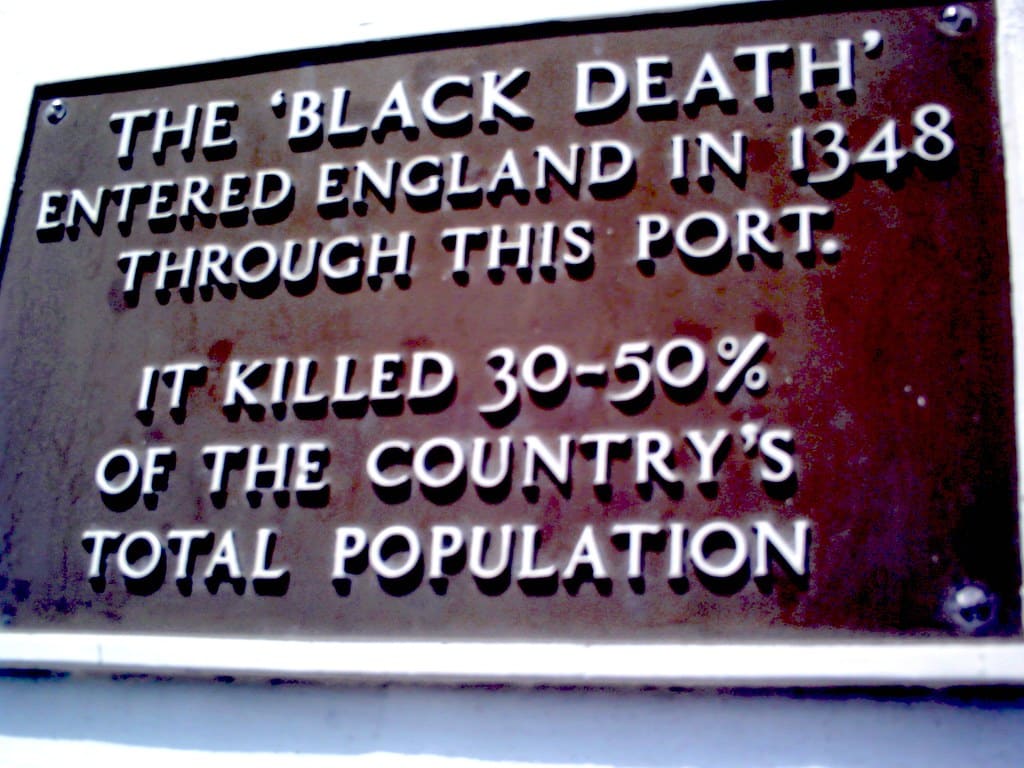Scientists believe they have uncovered the origins of the Black Death, more than 600 years after the plague killed millions of people in Europe, the Middle East and North Africa.
Having entered in to Britain via Weymouth in the 1340’s its original origins have now been discovered.
Despite decades of study, researchers have not been able to pinpoint where the medieval bubonic plague began.
Now the answer may have been provided by ancient teeth taken from graves.
The plague originated in Kyrgyzstan, central Asia, in the 1330s, analysis of DNA from the teeth of skeletons suggests.
“Our study puts to rest one of the biggest and most fascinating questions in history and determines when and where the single most notorious and infamous killer of humans began,” Dr Philip Slavin, a historian who helped make the discovery, said.
A team of Scottish and German scientists noticed a significant rise in burials near Lake Issyk Kul in the Tian Shan region of Kyrgyzstan from 1338 to 1339.
The researchers discovered that the cemeteries had been excavated in the late 1880s and about 30 skeletons taken.
The team, made up of scientists from the University of Stirling, the Max Planck Institute and the University of Tubingen, was able to track the skeletons down and take DNA from the teeth of seven people.
Sequencing, which determines the DNA structure, revealed that three people carried Yersinia pestis, a bacterium linked to the beginning of the Black Death outbreak before it arrived in Europe. Plague (Yersinia pestis) Plague is a disease caused by Yersinia pestis, an anaerobic, gram-negative bacterium. The natural host for this organism is a rat and the disease is usually transmitted to humans through a flea bite from a flea that has fed on an infected rat and then on a human.
As part of the research, Dr Slavin studied the diaries of the excavations to match the skeletons to their headstones and translate the inscriptions, which were written in the Syriac language.
Dr Maria Spyrou, of the University of Tubingen, and the first author of the study, said: “Despite the risk of environmental contamination and no guarantee that the bacteria would have been able to be preserved, we were able to sequence a DNA taken from seven individuals unearthed from two of these cemeteries.
“Most excitingly, we found a DNA of the plague bacterium in three individuals.”
Professor Johannes Krause, of the Max Planck Institute for Evolutionary Anthropology in Leipzig, said: “Just like Covid, the Black Death was an emerging disease and the start of a huge pandemic that went on for some 500 years.
“It’s very important to understand actually in what circumstances did it emerge.”
The origins of the plague have been debated by historians since its appearance in Europe, the Middle East and North Africa in the 14th century.
The Black Death, considered one of the worst infectious diseases in human history, was the start of nearly 500 years of killer diseases known as the Second Plague Pandemic.
The study was published in the journal Nature.












